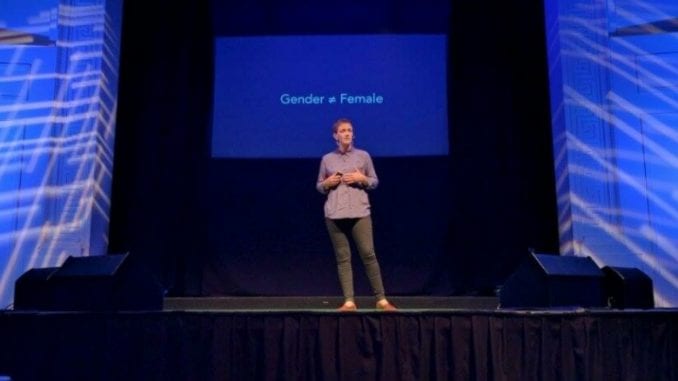
Interviewing coffee professional Colleen Anunu for the cover article in the just-released February+March 2017 issue of Barista Magazine was fascinating—and long. Longer than we had room for in the print magazine. So here we present the entire interview, along with some photos Colleen dug out of the archives for us. Enjoy!
Sarah Allen: OK, Colleen, let’s start with some background. Where are you from, and how did it help define who you are?
Colleen Anunu: I was born March 5, 1983, in Rochester, N.Y. I grew up in a suburb of Rochester called Fairport, right on the Erie Canal.
In 1999, my mom and I moved to Ithaca, N.Y., a progressive college town, home to Cornell University, where I lived with her and my stepfather until college. I was the last one in the “nest,” and we moved during my junior year of high school. Moving in high school sounds like it would be hard, and it was at times, but I was 16 with an old Honda, so was able to explore on my own.
The town is small and surrounded by waterfalls. You may have seen those T-shirts and bumper stickers that say “Ithaca is Gorges.” It’s true. Ithaca is a stunning place with amazing energy. In addition to the waterfalls, there are three waterways that move through the small downtown area from the surrounding hills. I believe the perpetual movement of the water and turnover of the college populations give the area a feeling of constant rejuvenation. The town also situated on the southern tip of Cayuga Lake, one of the Finger Lakes, on whose shores you can find wineries, distilleries, cider houses, and a number of small farms. Plus, our current mayor was elected when he was 24, so that’s cool, too.
SA: What kind of a kid were you growing up?
CA: I was a very outgoing and active child, and definitely had trouble sitting still. I played a lot of neighborhood sports with the boys. I loved being outside and swimming.
I don’t remember what I wanted to be when I grew up, but I did know that I never wanted to go to “sleep-over college” and be far away from my mom. Funny coincidence that I ended up attending the two colleges in my hometown. I moved out of my mom’s house when I was 18, but the first time I’ve ever lived more than five miles away from her was last fall, when I moved to Montreal. I was 32.
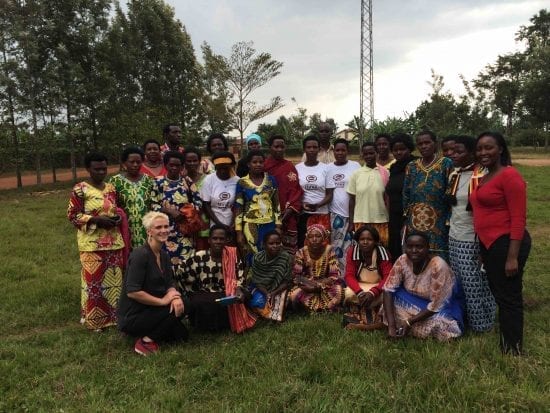
SA: And then what about your teenage years and then into college—what kind of person were you growing into?
CA: I’ve always been 100-percent adaptable and reflective, and an opportunist with a “do no harm” principle. I’ve never been particularly career-oriented, but I’ve always been motivated to be the best version of myself.
My first job was delivering a PennySaver once a week. I wasn’t exactly on the job hunt at 13, but I overheard this older boy at the school bus stop say he wanted to quit his newspaper route but needed to find someone to replace him. Eleven dollars a week sounded good to me—I had my eye on a Birdhouse skateboard.
Being an opportunist also leaves me insecure about the trajectory of my life. I’m good at making decisions when presented with a choice, bad at conjuring up what choices to make. One notable exception is when I decided to get my master’s degree, but even then I needed a lot of prompting from my partner.
In retrospect, I probably would not have attended college immediately after high school if it wasn’t for Wanda, a long-past-retirement-age guidance counselor, who convinced me a week before applications were due to consider Ithaca College. She ended up driving my application to the registrar’s office on the deadline because mailing it would have taken too much time and disqualified me.
I had originally applied to the School of Communications for advertising and marketing—I really wanted to direct commercials and write jingles–but while I was accepted to the college, I was waitlisted for that particular program. The registrar recommended that I choose another major for my first semester and then transfer into the advertising program later. For some reason I chose English, though I wasn’t particularly a ‘read for pleasure’ type teenager. I quickly discovered my analytical muscles and never did apply to transfer out of the humanities. I even added philosophy as a second major and creative writing as a concentration.
At the beginning of my junior year, I started taking advantage of an under-advertised exchange program between Ithaca College and Cornell University, which allowed students to take a number of credits at the other institution. This program allowed me to pursue my interests in postcolonial and globalization theory. In the end, I dropped all of my majors to create my own through a program called Planned Studies, which was for those ‘special’ students what didn’t quite fit into one discipline. I focused my final thesis on tropes of women, nature, diaspora and development in Pacific Island and Caribbean literature.
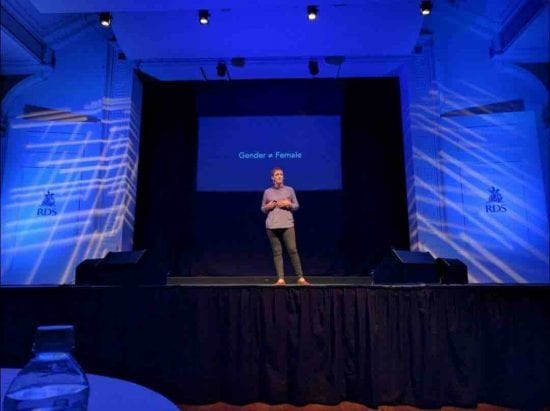
SA: Moving on to the start of your coffee life—tell us how that got moving.
CA: My first job in coffee was working at an espresso bar called Juna’s Café in downtown Ithaca in the pedestrian area known as The Commons. The business was owned by two women who I would describe as having a social mission to employ a diverse staff of mainly women, and to provide a supportive, inclusive, and healthy environment for all employees. The space had two levels where the balcony hosted music, readings, and community conversations.
This was 2002, I was a 19-year-old, navel-gazing sophomore in college. The term barista was not yet in my lexicon, coffee was not part of my consumption pattern, and I had no idea of the crisis happening in the coffeelands (at this time the market price was roughly $.50, well below cost of production). Juna’s was the spot for townies, young queers, and the counter-culture types. As a student, I frequented at night and on weekends with my books and 18-pound Toshiba Satellite laptop. I applied for a position because I had developed an affinity for those Oregon Chai concentrate lattes, and figured working at the café would be my cheapest pathway to them.
Juna’s had four different coffees brewed into 1-gallon pump pots at any one time: two from a roaster in Syracuse, N.Y.; a hazelnut from Green Mountain Coffee Roasters; and a rotating blend from a local roaster called Gimme! Coffee. Our espresso machine was a three-group semi-automatic San Marco with baskets about an inch-and-a- half deep and a tamper that didn’t quite seal the deal. Coffee wasn’t the conversation, but they had a tuna melt that I still think about today.
About a year later, I was working the counter at another café in the College Town neighborhood near Cornell University. In reality it was about a mile away from downtown and Juna’s, but the steep hills of Ithaca will make you believe it is a world apart—that and the clientele. Instead of the flax-wearing, progressive-agenda toting, $35,000-average-annual-income earning residents of Ithaca, I was serving coffee beverage with names like The Deconstructionist to a young, transient academic population of the yet-to-be labeled liberal elite. Stella’s Café proudly wore the aesthetic of an Ivy League frat- house library. The dark mahogany paneling and booths were permeated with tobacco smoke, a feature that made the spot a local institution—it was the only café in town where you could drink coffee, smoke cigarettes, and wax poetic with your friends until 2 a.m. I left Stella’s after being denied a 25-cent raise and found a new, more permanent home at Gimme! Coffee in 2004.
I was still in college and Gimme was a young company in a nascent specialty-coffee industry. Third “place”—not third “wave”—was the buzzword; “barista” was a position title, and Stockfleth was the preferred distribution method. Gimme! was an early adopter of specialty coffee preparation techniques due to some strong personalities in the company who were passionate about both quality of service and industry trends. For many of us, circumnavigating the stories that were handed to us about what coffee is and finding our own ways to approach the product were challenging and slightly demeaning, but also enlightening and empowering.
My first a-ha moment with coffee happened when I was hired at Gimme! and trained on quality coffee preparation. This is when I realized that coffee could be different if properly cared for. But as Gimme! was still roasting relatively dark on their two Sivetz fluid-bed roasters, and there weren’t any sample roasting and cupping protocols in place, I didn’t quite realize that coffee could be sweet, lively, and complex. That came when I tasted a honey process from Ninety Plus and Hartmann Estate. At this time in 2008, Gabe Boscana [now of Máquina Coffee Roasters] and I were newly co-managing the roasting department at Gimme! and the Hartmann Honey was the first coffee that we purchased for our recently acquired Probat LG-5. That a-ha moment basically led to a new strategy and brand for the company. We made changes to our roasting operations (sold the Sivetz and installed a 45-kilo Probat), coffee profiles, and marketing.
It wasn’t until my good friend, McCarthy, [now of Counter Culture Coffee and the 2013 World Brewers Cup Champion] took the reins of the training program, drafted our barista manual, and organized the first Northeast Regional Barista Competition, however, that I started to consider myself as participating in a collaborative community—not only because of his internal influence, but because we started interacting with the SCAA [Specialty Coffee Association of America]. Without the social cohesion and arena effect of the SCAA, Barista Guild, and Roasters Guild, I would not have seen the opportunity to build a life around coffee. Today, my number one piece of advice for anyone wanting to pursue a career in coffee is not just to attend or compete in events, but to volunteer.
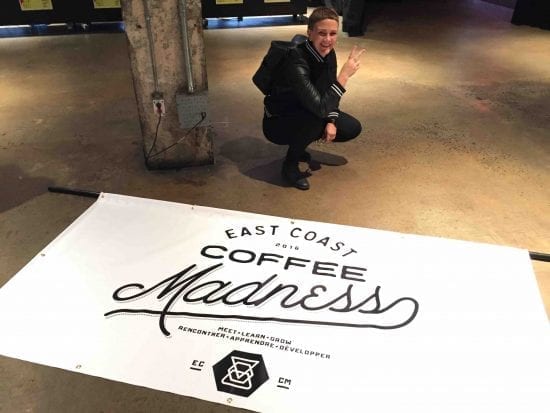
SA: You worked as a green buyer at a time when very few women were traveling to source to buy coffee. What was that like?
CA: I’ve never been too concerned about traveling as a female-identified person. I have, however, always been concerned about traveling as a queer-identified person. I don’t mean to oversimplify it but here goes: As a woman, I was aware of when I needed to travel with a group and when it was suitable for me to travel alone, but as a queer-identified woman, I never felt safe. Even after a long week of travel with a supply partner, and we’re halfway through a bottle of Zacapa and the discussion turns to family… I have a narrative about one of my best male friends as being my boyfriend— because we lived together and I knew how he liked his peanut-butter toast, or could describe his work, or that I could say, confidently, no, we never wanted to have children. I didn’t use this protectionist narrative solely in countries with explicit laws that punish homosexuality—I’m used it everywhere. I’ve had some discussions about this situation with a few close friends who are also queer and travel to coffee-growing regions. Some are confident and open, and others feel similarly guarded. But one thing we can agree on is that none of us want to lie about who we are.
Our industry values the ability to travel and experiential knowledge of coffee-producing regions as core competencies of any serious coffee professional. I think our pursuit of this knowledge overshadows important aspects of both personal safety and accountability when we do participate in sourcing trips or cupping competitions. I’m not saying that traveling is necessarily any riskier than staying home— these issues are present everywhere, and I have even been told by some coffee producers that they would never visit the United States because “everyone has a gun there”—but I do think a recognition of nuanced barriers to participation such as ableism, sexism and heteronormativity do indeed exist, should be recognized and actively addressed. We can be more proactive in our policies and in identifying where our standards, policies and Codes of Conduct can be more inclusive.
SA: So where does the story go from there? How did you come to decide to leave your amazing job as a green-coffee buyer to go back to school?
CA: During my time as the coffee buyer for Gimme!, I began volunteering with the Coffee Quality Institute (CQI) through their Coffee Corps program. Not only did I want to leverage my Q-grader license, but I also wanted to gain first-hand knowledge of coffee-producing countries that a small roasting company simply can’t afford traveling to. If you dig deep enough, you’ll find that many well-known industry leaders got their start from volunteering with Coffee Corps.
This is when my understanding of the opportunity of specialty coffee began to shift away from the simplistic idea that high quality is a pathway to higher income, to the idea that market information and market access is a way to offset the asymmetrical relationship between the “price setting” roaster and the “price taking” producer. This is what still drives me today: that coffee quality is a means, not an end; that coffee is about people.
My first assignment was as an international judge for the 2011 Taste of Harvest competition in Malawi. I got off of a plane after 30+ hours, my first time in Africa, and met the head judge for the competition, Mbula Musau, for dinner at perhaps Malawi’s only Italian restaurant. We ate pizza alone in an empty, 20-top dining room listening to the restaurant’s only music: Leona Lewis’s “Bleeding Love,” blasting on repeat for over two hours.
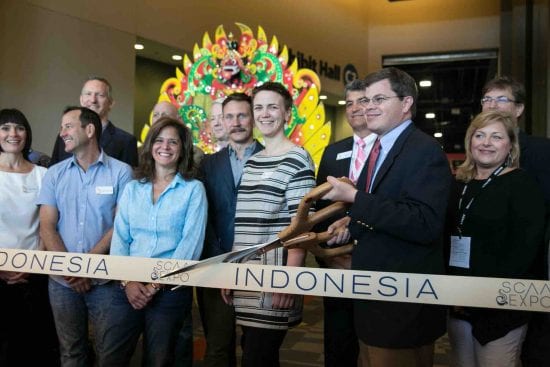
I characterize that first assignment as a great collaboration. We thought on our feet about how to execute a by-the-book cupping in a glorified storage closet at a livestock facility (the location was provided by a company diversified in livestock and crops, including tobacco, tea, and coffee). It was frustrating. There were times when I couldn’t tell the difference between the flies or the sweat on the back of my neck.
But Mbula’s attitude of ability brought out my complement. With her guidance, I was able to focus on the reason for being there, not just to evaluate coffee or execute an activity of a development program, but to support the people of a country with limited foreign exchange, day- long lines for petroleum and, like many countries, next to no government investment in the coffee sector. Coffee barely makes the top 20 list of valuable exports in Malawi, but there are over 3,000 people that derive their income from its production and sale.
My second assignment was in January 2013. I volunteered in Sumatra, Indonesia, to provide cupping training in association with a USAID Feed the Future project called the Agricultural Market and Support Activity II. This was my first real brush with development, the lingo, and the bureaucracy. I came into the project in essentially as a contractor role to design and implement a three-day seed-to-cup training for coffee growers in three different districts surrounding Lake Toba. The discrete assignment was for 14 days, but the program was funded for three years, and I was slated to lead the iterations of the coffee program design over time.
For some reason I thought training coffee producers in three towns around the 300-kilometer perimeter of Lake Toba would be relatively straightforward, but I was struck by how remarkably different the communities were. The farmer organization, participation of women, and ability to mobilize resources to enact the concepts of the trainings were completely different. My colleagues—three fiery Indonesian women—and I identified the gaps in the program design and were just beginning course correction when the funding was abruptly pulled: Feed the Future was no longer investing in market-access programs, only in food-security programs. At that moment I had decided that if I wanted to have a role in program design and advocacy, I needed to go back to school.
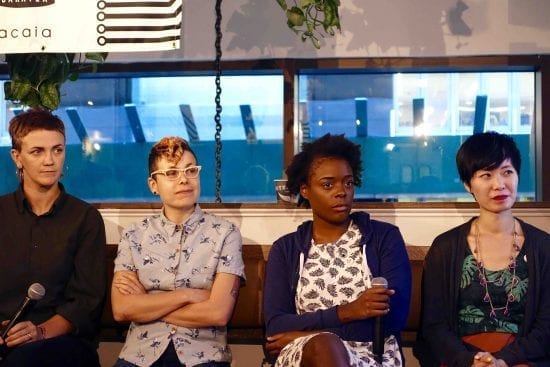
SA: When and how did you come to be involved in the gender equity work with CQI?
CA: In 2014, I received a grant to do some research in Rwanda in association with Sustainable Harvest Coffee Importers’ Relationship Coffee Institute. I wanted to familiarize myself with a survey methodology called the Women’s Empowerment in Agriculture Index (WEAI) in the context of the relationship coffee model, so Sustainable Harvest’s Rwanda Project was a perfect opportunity.
During this time, CQI had begun the preliminary stages of the Partnership for Gender Equity (PGE). After a few conversations with CQI’s gender advisor, Kimberly Easson, I made the decision to change my already-approved thesis plan so that I could act as the research lead for the program, and provide the literature review and workshop analysis for the PGE’s Phase 1. The final paper was entitled, Toward a Gender Inclusive Coffee Value Chain. Here’s the abstract:
Of the over 25 million smallholder farmers engaged in producing and processing coffee, an estimated 70 percent are smallholders with landholdings of less than 10 hectares. On these family farms, women’s labor contributes greatly to the final market articulation of the product, yet it has repeatedly been shown that despite the work that women contribute to the coffee production activities, they receive minimal compensation. Social biases in favor of men, rooted in culture and tradition, translate into women receiving less income, and having less access to land, credit, inputs, agricultural training, leadership opportunities, and information than men. This paper discusses the research outputs of a recent coffee industry-led effort to understand the constraints and opportunities for women in smallholder coffee-production systems, and explores the critical entry points for intervention and investment to promote gender equity throughout the coffee value chain.
SA: What were some surprises that came out of that work for you? Even with all of your years in coffee and working directly with people in producing countries, what were some things you learned or discovered that really blew you away (in good ways and bad)?
CA: The work with CQI exposed my naiveté in very confronting ways. In all of my years buying coffee, meeting with coffee producers, implementing quality trainings, and marketing the mythologies of the direct trade, I never once thought about with whom I was interacting when I visited a farm or who attended trainings—usually the male head of household assumed to be ‘the’ producer. I never thought about who else in the family contributes to the production of coffee on the family farm, whether or not they have access to the coffee income, whether they have decision-making ability over that income or whether they are receiving the information on quality improvement for the tasks they are performing. Smallholder farming is family farming, and in some regions—regions we praise for the production of high-quality coffee—you would be completely shocked at the divisions of resources and responsibilities based on gender, and what the rights of women are in their particular house- holds and communities.
The research phase of the PGE included situational analysis workshops in Colombia, Nicaragua, Uganda, and Indonesia. The workshops exposed how in each context women were contributing to the coffee production, but as the land was held in the man’s name or the men were the formal members of a cooperative, the women did not directly receive income from their work. Instead, the majority of women relied on cash transfers from their husbands to purchase household items and school materials for children. Still, all of the contexts differed in important ways. In one area we discovered that women were not allowed to own cell phones because in this polygamous society, men were afraid that women would call other men. Money can also be transferred and stored on SIM cards, and men distrusted women with money. In another area, women were able to earn income from coffee production but since religious law dictated a wife’s obedience to her husband, they were unable to properly budget for household expenditures.
In a recent conversation about gender equity issues in coffee producing communities someone told me that they didn’t think it was their right as a coffee buyer to go into another community and try to change things. I take the position that, like it or not, we exist in an industry that interacts with other communities and changes things. Barriers and constraints for women in coffee communities exist, and when we do not address these problems, we only serve to reinforce them. There is a lot more we can do as coffee buyers and coffee professionals than focus on quality to create positive outcomes for the millions of people involved in coffee production. Again, back to the idea that we can be more proactive in our policies and in identifying where our standards, policies and Codes of Conduct can be more inclusive.
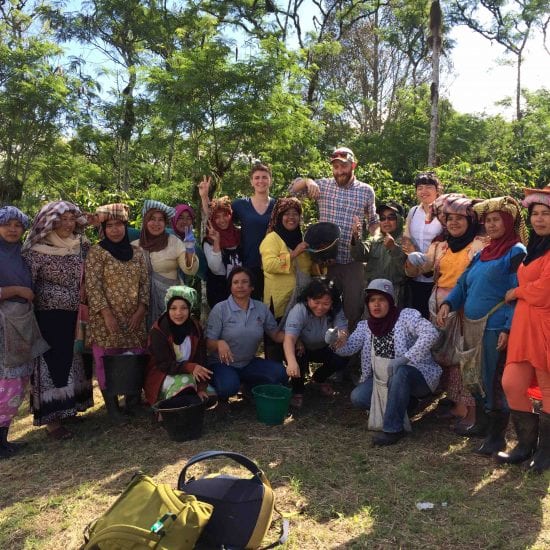
SA: So many people in coffee learn on the job, which you certainly did. But what gaps were there in your knowledge that made you feel you had to learn them in an academic setting? That is to say, what did you want to get out of your program at Cornell?
CA: I had decided to go back to school for two reasons. The first is more practical – nearly all of the open positions at development agencies that have programs in coffee require a Master’s degree in International Development or something similar. The second was based on a growing skepticism that high value, high quality coffee was not having the impact on livelihoods that we say it is. This seed for this skepticism was planted in April of 2011 during the SCAA Symposium in Houston. Rick Peyser presented the video, “After the Harvest: Fighting hunger in the coffeelands,” which described chronic food insecurity through a series of interviews with coffee farmers throughout Latin America. These were farmers from prominent coffee cooperatives, ones with the infrastructure to support microlot programs and direct trade relationships, ones that provide needed support services to farmer members. If your readers watch this movie, remember that this was before the roya outbreak of 2013.
The presentation really ripped through me—I looked around the room and the juxtaposition between the people in the audience and the people in the film was so striking that I walked out of the session in tears asking myself, “what the f*ck are we doing? What the f*ck am I doing?” There is nothing wrong with focusing on quality coffee, but there is something wrong with the failure to convey the reality of massive wealth extraction to consumers and the opportunity that specialty coffee has to combat it because we are too concerned with whether we say variety or varietal, or that a cafe serves 3-hour old Fetco brew, or that we publish photo essays of our glossed-over coffee travels with zero actionable information. These messages are not mutually exclusive, and there are indeed multiple truths, but I believe the taste makers of the world have the opportunity and responsibility to think critically about what information we convey, whether this information benefits producer livelihoods and how it informs consumer behavior.
SA: What would be a dream come true for you in terms of the coffee industry and where we could be 5 years from now, 10 years, 25 years? How do you want it to change, and how do you see us making that happen?
CA: The objectives that matter most for me for the future of our industry are to ensure that coffee is profitable in the long run; to reduce negative social and environmental impacts; and to leverage the systems and benefits of other coffee networks. To me quality is not the goal, and neither are precise definitions of specialty coffee such as water activity, roast development ratio and extraction percentages. These are undoubtedly important tools to understand our products, and someone should pursue them, but that’s not the job of everyone. Together we need to look beyond quality to the fundamental economics of coffee production if we are going to have a future coffee industry, because they are at the heart of many of the industry’s biggest challenges including farm profitability and financing, labor shortages, farm worker rights, generational succession, climate change adaptation, natural resource management and gender equity.
One of the trends that I see continuing into the future is the tidal wave of small batch roasting operations, where quality remains both the focal point and entry point for customers, but where collective impact is undermined by individualist marketing strategies. Growth of this market suggests that it is working – that we are conveying the value of coffee at retail-level and supporting the viability of coffee production at farm-level. But are we? We don’t know because we aren’t asking the right questions. Is it scalable? We won’t know if we don’t work together.
Today you can find small handful of larger green coffee importers that have created microlot programs, as well as a number of smaller, trusted green coffee suppliers entering the market, all with high value coffee but low quality impact information. In my opinion there is amazing opportunity on the part of these service providers to convene their customers, aggregate investments and create scalable, positive change. My suggestion is for micro-roasters is to leverage their networks in the following ways:
Contextualize your story.
Tracy Ging succinctly captured this sentiment as “honest emotional equity.” I see a lot of marketing today from roasters and importers alike that highlight their individual relationships with producers. This in and of itself is not a bad thing, but it often glosses over the supporting networks that have enabled such trade relationships to exist in the first place, and in some cases, roasters actively place themselves in opposition to these networks (think certification and verification schemes). It is important to recognize that our purchasing relationships do not exist in a vacuum, and that, on the whole, it was not quality premiums that brought farms and producer organizations back from the brink of destruction caused by roya.
Make information more actionable, less descriptive.
Actionable transparency is information that can be analyzed to create efficiencies, value and positive outcomes in supply chains. It is not sharing FOB prices with consumers in the context of the market, or compared to the Fair Trade minimum price. All that this tells me is the FOB price as the percentage of a company’s retail price. It also tells me that some roasters don’t understand what minimum means. Rather, what are farm level costs of operation in relation to farm gate price? What is the farm gate price in relation to the services and costs built into intermediary margins? Or, for rosters themselves, what is the return on investment for your services—my favorite cost center being roasting R&D. Does the constant tweaking of roasting parameters in pursuit of the ultimate roast profile create real value for your suppliers and customers? In other words, how can you say with confidence that you are returning more to producers without pushing inefficiencies onto consumers.
Of course, actionable transparency is not just for financial information – it pertains to social and environmental indicator areas as well. But whether you act to improve women’s empowerment by supporting the gender inclusive membership and leadership policies at the cooperative level, or to reduce downstream water pollution by investing in water-saving infrastructure at a washing station, do so with other stakeholders – roaster competitors, service providers, and the farming community itself.
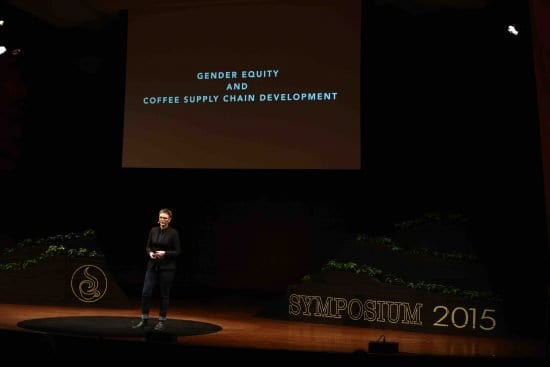
Share the accountability.
Ultimately, specialty coffee is not about quality—it is about people. And despite our best intentions, specialty coffee industry is complicit in increasing risk for people across the supply chains. We require producers, arguably the most risk averse segment of our supply chain, to engage in risky behavior – to invest more labor and resources in production practices, to extend their payment time horizons for increased quality vetting, to debt finance capital investments at astronomical interest rates, and to answer our intensive supplier assessments—in order to (potentially) receive higher prices. We require baristas to defend coffee narratives, craft an amazing beverage and ward off customer micro-aggressions in a single interaction for (potentially) an extra dollar.
Yet the opposite side of risk is opportunity, and I truly believe that we can actualize the benefits of coffee by leveraging networks, sharing the risk and working together for positive change.

